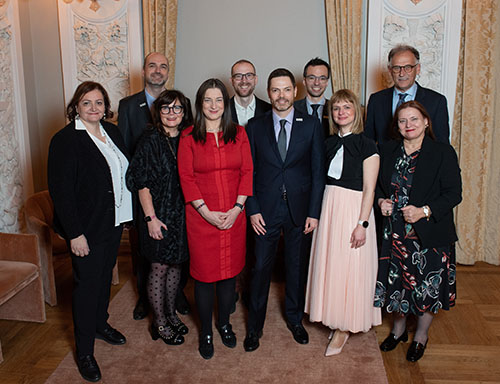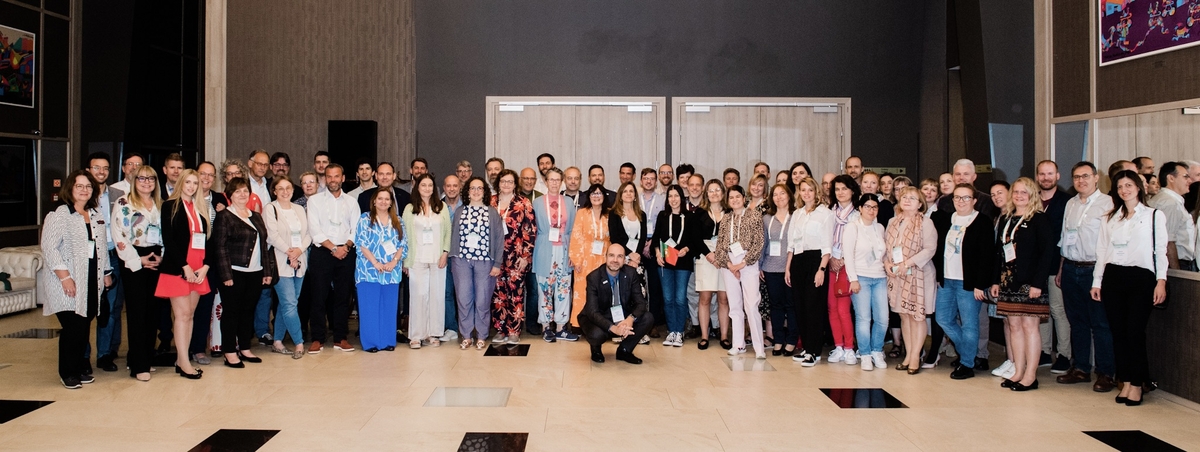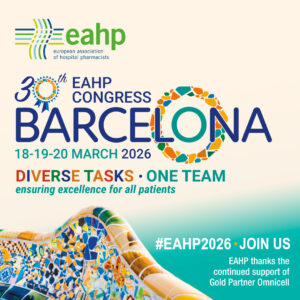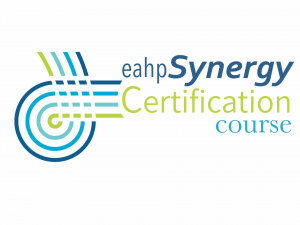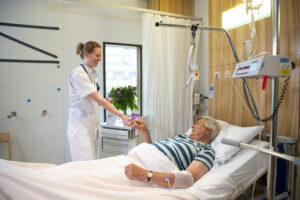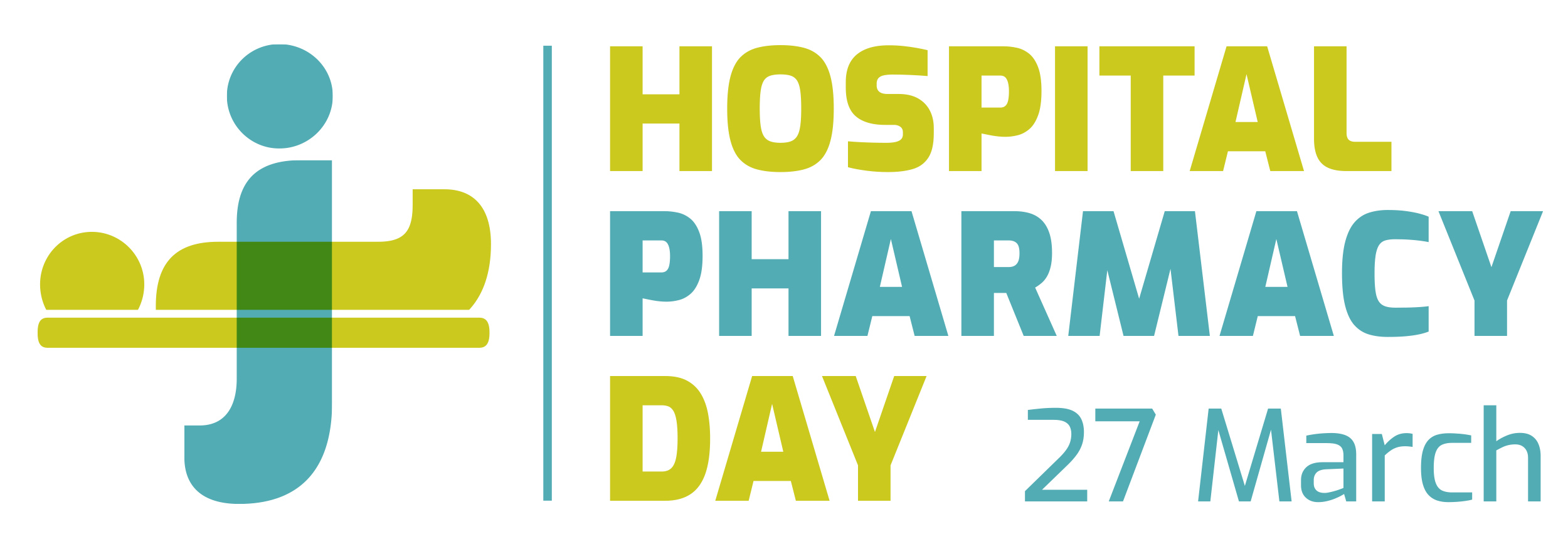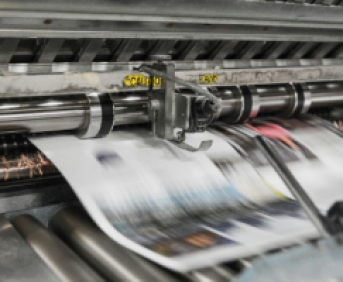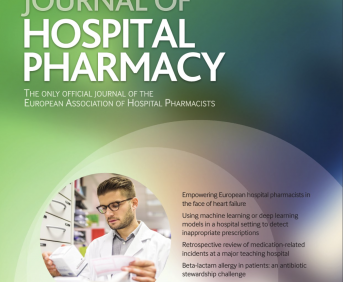THE LABOUR OF HOSPITAL PHARMACY SERVICES IN THE COVID-19 HEALTH CRISIS
Pdf

European Statement
Clinical Pharmacy Services
Author(s)
CLARA NOTARIO DONGIL, PATRICIA ARAQUE ARROYO, MARÍA MAR ALAÑÓN PARDO, ALEJANDRO MARCOS DE LA TORRE, MARÍA CARMEN GARCÍA CONDE, BEATRIZ PROY VEGA
Why was it done?
The circuit was designed during the pandemic period responding to the COVID-19 situation. The aim was providing the best service to hospitalized patients. The activity began on March 10, 2020.
What was done?
Due to the current pandemic caused by SARS-CoV-2, our Pharmacy Service (PS) has been reorganized and adapted its activity by areas according to the needs of a given situation.
How was it done?
1.- Priority areas were set up.
2.- Main activities to develop in each section were defined.
3.- There was a redeployment of the PS staff.
What has been achieved?
Pharmaceutical assistance: PS developed pharmacotherapeutic protocols, collaborated giving advice to medical staff selecting appropriated treatments and detecting the most important interactions between drugs. It also advised regarding to compatibility and stability of medication, providing in addition written information through tables and triptychs elaborated.
Pharmacotechnics: 1,320L of hydroalcoholic solution were elaborated and 1,161L that were donated to the hospital were repackaged; 5.3L of hydroxychloroquine 25 mg/mL oral suspension were prepared for patients in the Intensive Care Units (ICU).
Parenteral preparations: Perfusion elaboration was centralized in the PS; 495 infusions of midazolam 1.6 mg/mL and 1,570 of fentanyl 0.012 mg/mL were formulated to ICU. Individualized doses of intravenous tocilizumab belonged to 31 patients were elaborated.
Management and acquisition of medicines: Two new hospitalization areas and three new ICUs were set up, equipped with medication kits. We increased the frequency of medication replacement and the stock of medication in the hospitalization units was adapted. We made a continuous review of medication stocks due to high stocks turnover because an elevated demand. To guarantee the supply of medicines related to SARS-CoV-2, medication was requested through the application of “management of medicines in special situations” of the Ministry of Health. 45 applications were processed.
What next?
The project is applicable to whatever PS, a defining figure in SARS-CoV-2 health crisis´s management, giving priority to essential services.
Early detection of prerenal acute kidney injury (AKI) inpatients through multidisciplinary action.
Pdf

European Statement
Clinical Pharmacy Services
Author(s)
MARGARITA BELTRAN GARCÍA, NATALIA MARTÍN FERNÁNDEZ, MERCEDES SALGUEIRO LAZO, SANTIAGO SANDOVAL FERNÁNDEZ DEL CASTILLO, MIGUEL ÁNGEL CALLEJA HERNÁNDEZ, ANTONIO LEÓN JUSTEL
Why was it done?
AKI is an underdiagnosed syndrome due to delay in detection and late referral to the nephrology unit. A real-time electronic alert system integrated into a multidisciplinary protocol could be useful for early identification and diagnosis.
Among the risk factors associated with AKI is the use of nephrotoxic drugs such as NSAIDs and COX-2, ACE inhibitors and ARA-II, Cyclosporine and Tacrolimus.
What was done?
A multidisciplinary protocol was established for the detection and early action of prerenal AKI inpatients with hospital and Primary Care monitoring.
How was it done?
An authomatic electronic tool, agreed between Biochemistry and Nefrology units, was designed for the selection of AKI patients. The pharmacist was contacted when a prerenal AKI was detected, who generated an alert in the electronic prescription system in order to recommend actions related to prescribed nephrotoxics drugs. An analysis was request to check renal function in these patients, after 48 hours in the hospital and after 1 month of discharge from the Primary Care.
There were many previous meetings and the leadership of each unit was maintained in the participation of strategies.
What has been achieved?
The aim was to improve the detection of prerenal AKI in inpatients and increase the quality of healthcare in these patients.
For this 3-month pilot phase, were selected 3 clinical unit and 9 prerenal AKI cases have been detected. The most frequent risk factors were: 9 cases due to volume deplection, 6 due to nephrotoxic drugs use and 3 due to chronic kidney damage (CKD). The measures adopted were: add fluid therapy in all cases, cancel nephrotoxic drugs and modify the diuretic drugs prescription in 6 of 7 cases. There was only 1 death.
What next?
This strategy will be extended to all hospital clinical units. Data will be obtained on incidence and morbidity and mortality in these patients, as well as on length of hospital stay.
SHARED PHARMACEUTICAL CARE PROGRAMME AGAINST COVID-19
Pdf

European Statement
Clinical Pharmacy Services
Author(s)
OLIVIA FERRÁNDEZ, CRISTINA RODRIGUEZ, NURIA CARBALLO, ZARA CORINNE, MARTA DE ANTONIO, MIQUEL OJEDA, RITA PUIG, JORDI DE DALMASES, JORDI CASAS, SANTIAGO GRAU
Why was it done?
It was established as a primary strategy against COVID-19 and to demonstrate the benefits of shared care of the patient, by hospital and community pharmacists, as regards to the improvement in their health status.
What was done?
In March 14th 2020, the Spanish Government declared the state of alarm which restricted citizens’ mobility due to the SARS-CoV-2 coronavirus pandemic. The Catalan Health Service (CatSalut), which provides health support to an autonomous community of 7.5 million people, issued a series of strategies to protect vulnerable patients from commuting to the hospital to collect their Outpatient Hospital Medicines (OHM).
One of these strategies established a shared pharmaceutical care program involving both hospital and community pharmacists. Thus patients collect their OHM at their local community pharmacy and avoid commuting to the hospital.
How was it done?
An official standard operating procedure reflecting this strategy was drawn up by CatSalut, Barcelona Pharmacists Association (COFB) and Hospital del Mar de Barcelona (HMar).
This project was initiated in March 23rd 2020 and it has been offered to all publicly funded hospitals in Catalonia.
A safe cloud-based web application, designed between COFB and HMar, was available to monitor all the medicines delivered using this circuit. Patients are included in this platform and are notified when their OHM has been sent to the community pharmacy selected by them. The computer application also includes a communication channel between community and hospital pharmacists to assess any medication-related incidence detected, as well as a telepharmacy service for patients.
What has been achieved?
In October 9th 2020, 3,293 patients, from 22(34.9%) hospitals in Catalonia, have been included to this system. The number of participating community pharmacies is 2,851(88.6%). A total of 8,806 treatments were delivered to the patients by community pharmacists. 10.2% of treatments are delivered through community pharmacies sharing the same postal code of the Hospital; 41.6% are delivered in the same municipality; 35.9%, in the same province and 12.3% are delivered through community pharmacies which are in a different province.
What next?
Establishing optimal communication channels between both professionals results in a better understanding of patients’ pharmacotherapeutic treatment and being able to act efficiently in those cases that are necessary.
DRUG-DELIVERY-SYSTEMS FOR OPAT SELF-ADMINISTRATION: A GRAPHIC GUIDE
Pdf

European Statement
Clinical Pharmacy Services
Author(s)
Tania Truelshoej
Why was it done?
Department of infectious diseases at Aarhus Universitetshospital, Denmark, has succesfully implemented OPAT as a standard modality for certain patients requiring long-term intravenous antibiotic therapy e.g. patients with cystic fibrosis. This also include a guideline to OPAT self-administration at home.
To implement the OPAT guidelines throughout the hospital there was a need for an overview of available ready-to-use antibiotics for OPAT. The graphic guide is a help for the physicians in choosing the right drug-delivery-system suitable for OPAT self-administration.
What was done?
A graphic guide showing the ready-to-use antibiotics for outpatient parenteral antimicrobial therapy (OPAT) with special emphasis on drug-delivery-systems suitable for self-administration was developed.
How was it done?
Most information about the available ready-to-use antibiotics were obtained at the hospital pharmacy. In addition, the requirements for the different drug-delivery-system were obtained by interviewing nurses from different wards
What has been achieved?
Available ready-to-use antibiotics was listed in a graphic form with the following information: type of antibiotics, drug-delivery-system, available doses recommendations to time of administration and storage time and temperature. The drug-delivery-system were all illustrated with a photo.
The graphic guide is now part of the implemented guideline for OPAT at the hospital and is also available as a printed poster to place e.g. in the medicine room.
The guide is a help for the physicians in choosing the right drug-delivery-system suitable for OPAT self-administration and helps to raise overall awareness of the possibility of OPAT as self-administration at the hospital.
What next?
Implementation of the OPAT guideline and the included graphic guide has increased awareness of the need for the hospital pharmacy to deliver ready-to-use antibiotics that can match the needs for safe and efficient treatment at home. This is an important strategic focus for the hospital pharmacy in the coming years.
A multi-disciplinary teams’ collaborative approach to transition benralizumab dependent severe eosinophilic asthmatic patients to self-administration in response to the COVID-19 pandemic
Pdf

European Statement
Clinical Pharmacy Services
Author(s)
Grainne D’Ancona, Niall Stewart-Kelcher, Schaya Bains, Andrew Hearn, Joanne Kavangh, Cris Roxas, Linda Green, Linda Thomson, Marianna Fernandes, Brian Kent, Alexandra NanzerKelly, David Jackson, Jaideep Dhariwal
Why was it done?
The COVID-19 pandemic necessitated the rapid transition of benralizumab dependent SEA patients onto home administration to facilitate on-going therapy in a cohort of patients who were “shielding” under UK government guidance.
What was done?
246 severe eosinophilic asthmatic (SEA) patients treated with benralizumab; a biologic agent targeting the human interleukin-5 receptor (IL-5Rα), at a specialist NHS asthma clinic, were transferred to self-administration at home in response to the COVID-19 pandemic. Alongside this, patients continued to need to be newly initiated on benralizumab therapy in spite of the pandemic and innovative pathways were created to ensure rapid initiation of therapy and home administration.
How was it done?
A varied multi-disciplinary team including pharmacists, pharmacy technicians, specialist nurses, doctors, physios and phycologist conducted a variety of in-person and virtual (telephone and video) consultations to consent and train patients on self-administration in their own homes in a rapid transfer to home administration.
What has been achieved?
We have investigated this patient cohort for any unwarranted effects by comparing the last Asthma Control Questionnaire-6 (ACQ6) measured in clinic with that collected by telephone consultation 8-12 weeks after transition to home administration. 246 benralizumab patients were included in the analysis, of whom 49 (20%) were new. There was no significant difference in pre-biologic ACQ6, pre-homecare (baseline) ACQ6 or post-homecare ACQ6 between the new and established patient groups. Both cohorts exhibited a similar magnitude of improvement in their ACQ6 following the transition to home administration (-0.73 in the established group vs -0.73 in the new group, both P<0.0001). We have demonstrated that early transition to home administration in patients treated with benralizumab is not associated with worse clinical outcomes as assessed by ACQ6.
What next?
Evaluation of patient experience on the switch to self-administration is currently being carried out via patient surveys with this data due to be completed in early 2021. Further research is required to understand the potential influence of lockdown and/or telephone vs face-to-face ACQ reporting.
RESHAPING OF CLINICAL PRACTICE AND REORGANISATION OF CHEMOTHERAPEUTIC PROTOCOLS DURING COVID-19 PANDEMIC: THE INITIATIVE OF THE NATIONAL INSTITUTE OF TUMORS
Pdf

European Statement
Clinical Pharmacy Services
Author(s)
Giuliana Lo Cricchio, Margherita Galassi, Ernesto Ruffino, Claudia Tirone, Vito Ladisa
Why was it done?
In accordance with regional provisions and national guidelines, the initiative has had the dual objective of reducing hospital access, and potential infections, and ensuring therapeutic continuity for cancer patients.
What was done?
Some therapy protocols have been modified for the treatment of blood, gastrointestinal, lung, breast, head and neck tumors, in order to obtain equally effective patterns but with longer intervals between doses.
How was it done?
Patients have been stratified on the basis of the neoplasia location and biology, the general conditions and the treatments characteristics and they have been shifted to modified treatment regimes, even outside the indications temporarily authorized by regional decision: Nivolumab from 240 mg Q2W to 480 mg Q4W for Hodgkin lymphoma, non-small-cell lung-cancer, squamous cell carcinoma of the head and neck; from weekly Paclitaxel to Docetaxel Q3W for breast cancer; Pembrolizumab from 200 mg Q3W to 400 mg Q6W for lung cancer and melanoma; remodulation of protocols including fluoropyridines and platinum coordination compounds for gastroenteric tumors.
What has been achieved?
The schedule modification allowed a reshaping of agendas to reduce the frequency of day-hospital access and the risk of infection with Sars-Cov-2 for patients, carers and health professionals, in addition to reducing the costs of outpatient services. Treatment interruption rate, with possible consequent progression of disease, as reported by early Chinese data in the literature, has been reduced.
What next?
The extraordinary health emergency changed the clinical practice and aroused interest especially in oncology, where the evaluation of the relationship between benefits and risks associated with therapies has required greater attention because they are life-saving therapies that cause immunosuppression in patients for which the adverse course of viral infection is more frequent than that of the non-neoplastic population.
The possibility of using the modified therapy schemes has been limited only to the emergency period and has not yet resulted in an extension of the indications. The achievement of the therapeutic objective, together with the feedback that the new dosages have not led to a significant increase in adverse events compared to normal clinical practice, encourage us to hope that the indications can be extended in Italy, as has already happened in Canada and USA for the Nivolumab.
A multi-disciplinary teams’ collaborative approach to transition mepolizumab dependent severe eosinophilic asthmatic patients to self-administration in response to the COVID-19 pandemic
Pdf

European Statement
Clinical Pharmacy Services
Author(s)
Grainne D’Ancona, Niall Stewart-Kelcher, Schaya Bains, Andrew Hearn, Joanne Kavanagh, Cris Roxas, Linda Green, Louise Thomason, Marianna Fernandes, Brian Kent, Alexandra NanzerKelly, David Jackson, Jaideep Dhariwal
Why was it done?
The COVID-19 pandemic necessitated the rapid transition of the remaining 41 mepolizumab dependent SEA patients onto home administration to facilitate on-going therapy in a cohort of patients who were “shielding” under UK government guidance.
What was done?
87 severe eosinophilic asthmatic (SEA) patients treated with mepolizumab; a biologic agent targeting interleukin-5 (IL-5), at a specialist NHS asthma clinic, were transferred to self-administration at home compared to usual practice of administration in a hospital setting. 40 patient were transferred in late 2019 as a planned ‘pilot’ transition and 47 patients were transferred unplanned due to the COVID-19 pandemic. We investigated whether there was a change in asthma control following the transition to home administration and whether a differential response to treatment exists following transition to homecare before and after the onset of the COVID-19 pandemic.
How was it done?
A varied multi-disciplinary team including pharmacists, pharmacy technicians, specialist nurses, doctors, physios and phycologist conducted a variety of in-person and virtual (telephone and video) consultations to consent and train patients on self-administration in their own homes in a rapid transfer to home administration
What has been achieved?
Patients receiving mepolizumab at home were stratified according to those who had a planned transition prior to 1st Feb 2020 versus those who had an unplanned transition after this date necessitated by the COVID-19 pandemic. The last Asthma Control Questionnaire-6 (ACQ6) measured in clinic (“baseline”) was compared with that collected by telephone consultation 6-8 weeks after transition. Immediately prior to transition to homecare (baseline), the planned group had a lower mean ACQ6 than those in the unplanned group (1.19 vs 1.90, P=0.004). The ACQ6 on home administration decreased significantly in both groups (-0.47 in the planned group vs -0.56 in the unplanned group, both P<0.001). The ACQ6 for the planned cohort during homecare was significantly lower than that for the unplanned group (0.72 vs 1.34, P=0.012).
What next?
Evaluation of patient experience on the switch to home administration is currently being carried out via patient surveys with this to be completed in early 2021. Further research is required to understand the potential influence of lockdown and/or telephone vs face-to-face ACQ reporting.
DETECTION OF PHARMACOKINETIC/PHARMACODYNAMIC DRUG INTERACTIONS OR PATHOPHYSIOLOGICAL CONTRAINDICATIONS WITH INJECTABLE CHEMOTHERAPIES: IMPLEMENTATION OF THE SOFTWARE PHARMACLASS® IN ONCOLOGY
Pdf

European Statement
Clinical Pharmacy Services
Author(s)
Pauline Barreau, Joséphine Courouble, Pierre Pilven, David Vandecapelle, Thibault Stala, Geoffrey Strobbe, Guillaume Marliot, Frédéric Feutry
Why was it done?
Two prescription assistance software are using in the hospital: DXCare®, for global drug management, and Chimio®, specific to the prescription and preparation of injectable chemotherapies. Clinical pharmacists (DXCare®) and pharmacists in charge of preparation (Chimio®) carry out the pharmaceutical analysis independently and they may not detect potential pharmacokinetics/pharmacodynamics drugs interactions or pathophysiological contraindications, slowing down the pharmaceutical analysis. Pharmaclass® can improve that by crossing all data flows between DXCare® and Chimio® and alerting the pharmacist. The objective were to select and code priority alerts and evaluate the detectability of drugs interactions and pathophysiological contraindications by the software Pharmaclass®.
What was done?
Pharmaclass® is a software based on rules created by the pharmacist, from pharmaceutical algorithms. This rules engine crosses in real time all data flows of several software and sends alerts that must be analyzed by a pharmacist. It was applied in oncology for injectable chemotherapies.
How was it done?
An interface was set up between DXCare®/Chimio® and Pharmaclass® to allow the creation of requests. An analysis of drug consumptions and drugs at risk of interactions helped to select seven molecules (Methotrexate, Bevacizumab, Fluorouracil, Ifosfamide, Irinotecan, Cisplatin, Pemetrexed). A study of the summaries of the product characteristics and the drug interaction thesaurus and a bibliography was conducted and the rules were coded. These were checked by creating test patients with false prescriptions.
What has been achieved?
Eleven rules were created and, after some tests and coding readjustments, all was detected. Nine rules are about drugs interactions: three contraindications (Methotrexate/Trimethoprim, Methotrexate/Acetylsalicylic acid, Bevacizumab/Naloxegol), three associations not recommended (Methotrexate/Amoxicillin, Methotrexate/Ciprofloxacin, Fluorouracil/Antivitamin K), one precaution of use (Ifosfamide/Aprepitant) and two other rules concern enzymatic induction and inhibition of the metabolism of Irinotecan. The last two rules link the glomerular filtration rate with Cisplatin and Pemetrexed.
What next?
Following these creations, Pharmaclass® has allowed to detect drug interactions and pathophysiological contraindications that were not previously detectable. Thereafter, objective will be to establish an organization for the management of alerts and evaluate the number and the relevance of these alerts. New rules will be created for all injectable chemotherapies used in the hospital. Other center of Unicancer will be able to use these rules.
CLINICAL PHARMACOKINETICS OF ANTI-TNF THERAPY: OUR FIRST EXPERIENCE IN INFLAMMATORY BOWEL DISEASE
Pdf

European Statement
Clinical Pharmacy Services
Author(s)
María Mar Alañón Pardo, Alejandro Marcos de La Torre, Beatriz Proy Vega, Adrián Pérez Facila, María Luisa Moreno Perulero, Clara Notario Dongil
Why was it done?
Numerous publications have demonstrated a correlation between serum concentrations (Cs) of anti-TNF drugs and the therapeutic response and a wide interindividual variability in pharmacokinetics among patients with IBD. TDM permits dosage individualization and optimization of anti-TNF therapy.
What was done?
Pharmacokinetic monitoring (TDM) of anti-TNF therapies (infliximab/adalimumab) in inflammatory bowel disease (IBD) was implemented in our hospital by a multidisciplinary team of pharmacists, gastroenterologists and clinical analysts.
How was it done?
A computer platform was developed within the hospital electronic records system to manage consultations of gastroenterologists with the Clinical Pharmacokinetics Unit (CPU) of the Pharmacy Department. Variables in this electronic interconsultation system were: “anti-TNF drug”, “concomitant immunomodulator (IMM)”, “diagnosis”, “reason for consultation”, “date of last dose”, “date of extraction”, “weight/height”, and “observations”. Laboratory tests ordered from the Department of Clinical Analysis on the electronic request form included blood count, Cs of infliximab/adalimumab, albumin, C-reactive protein and faecal calprotectin. Quantum Blue® lateral flow immunoassay was used to quantify Cs of the anti-TNF drugs; when undetectable, the presence of anti-drug antibodies (ADAs) was investigated.
The CPU developed pharmacotherapeutic recommendations based on therapeutic algorithms, pharmacokinetic/pharmacodynamic principles and population models implemented using MW-Pharm++® software, which incorporates the principle of Bayesian estimation. For a correct interpretation of the Cs observed, adherence to anti-TNF ± IMM regimens was evaluated using electronic dispensing records and the self-administered Morisky-Green questionnaire.
What has been achieved?
Since its implementation (January 2019 – August 2020), the CPU has responded to 269 consultations on 121 patients treated with infliximab (46.3%) or adalimumab (53.7%): 70.2% were prescribed with IMM (89.4% with thiopurines); 93.4% adhered to the anti-TNF regimen and 82.4% to the IMM. Baseline anti-TNF Cs were subtherapeutic in 37.2% of patients, therapeutic in 35.5% and supratherapeutic in 27.3%. ADAs were positive in 28.6% of patients with undetectable anti-TNF Cs (n=28). A large proportion (84.8%) of consultations were related to proactive monitoring (to optimise treatment) and the remainder were reactive (after treatment failure). A very high percentage (89.9%) of the gastroenterology specialists accepted recommendations.
What next?
Extend TDM to other biological therapies and immune-mediated diseases.
THE EXPERIENCES OF A UNIVERSITY HOSPITAL MEDICATION PREPARATION UNIT IN COVID-19 PANDEMIC
Pdf

European Statement
Clinical Pharmacy Services
Author(s)
Sinem Şeker Şimşek
Why was it done?
In terms of medication and patient safety, to establish a safe non-cytotoxic medication preparation process, to ensure continuity of well-educated and motivated pharmacy staff are the key elements of pharmacy-based medication preparation units. This work aimed to share our experiences about how to be challenged with the risk in the drug preparation process during the pandemic as a university hospital pharmacy centered non-cytotoxic medication preparation unit.
What was done?
We have taken general precautions recommend by the World Health Organization. However, the protocol we have used to prepare Lopinavir/Ritonavir, Preparation of Hydroxychloroquine sulfate, Favipiravir and Hydroxychloroquine sulfate with Simple Syrup, Preparation of intravenous drugs (Tocilizumab)
How was it done?
The preparation of solid oral dosages, which should be administered to intubated Covid-19 patients through a nasogastric tube, was prepared by the ready to administration team of our pharmacy.
There is no evidence-based data on the bioavailability of these enteric-coated tablets after being crushed and administered to these vulnerable patients. The biggest challenge was lack of the reliable medication information sources. Before starting the Covid-19 medications preparation process, possible risks that could arise if crushed administration of these drugs were evaluated with a multidisciplinary team.
What has been achieved?
We suspended the Lopinavir/Ritonavir with dextrose during the preparation phase. We preferred the lavage syringe for intravenous administration risk elimination through ensuring patient and drug safety by preventing the risk of intravenous administration of the diluted suspended drug we have prepared. However, when we used a 3-way infusion manifold the strain during pushing and easy disconnection of the joints thus the risk of dose loss were the disadvantages.
What next?
The two pillars of dealing with the COVID-19 epidemic, which has affected the whole globally, are the proper preparation of the necessary medicines for treatment and the treatment itself. Drugs were prepared in line with the search for “a practical solution immediately” and the directives of the Ministry of Health and successfully administered to the patients. Our study is noteworthy as it shows that drugs can be prepared not only by the default ways but also by the different methods
